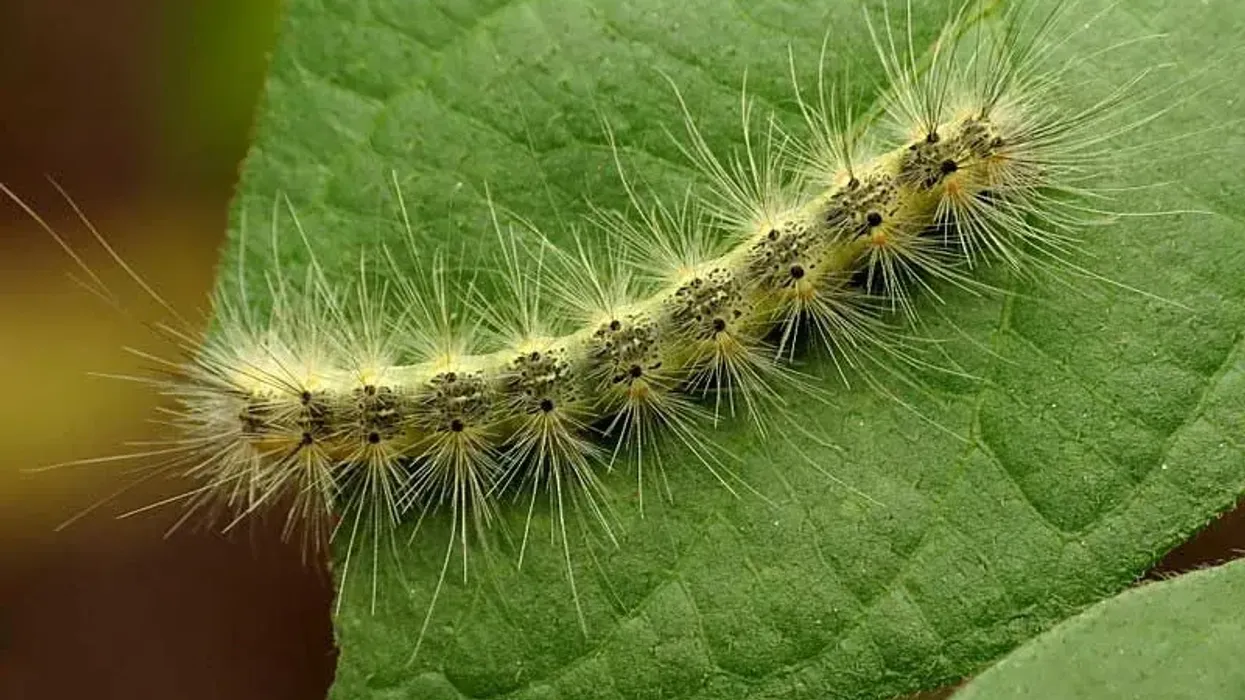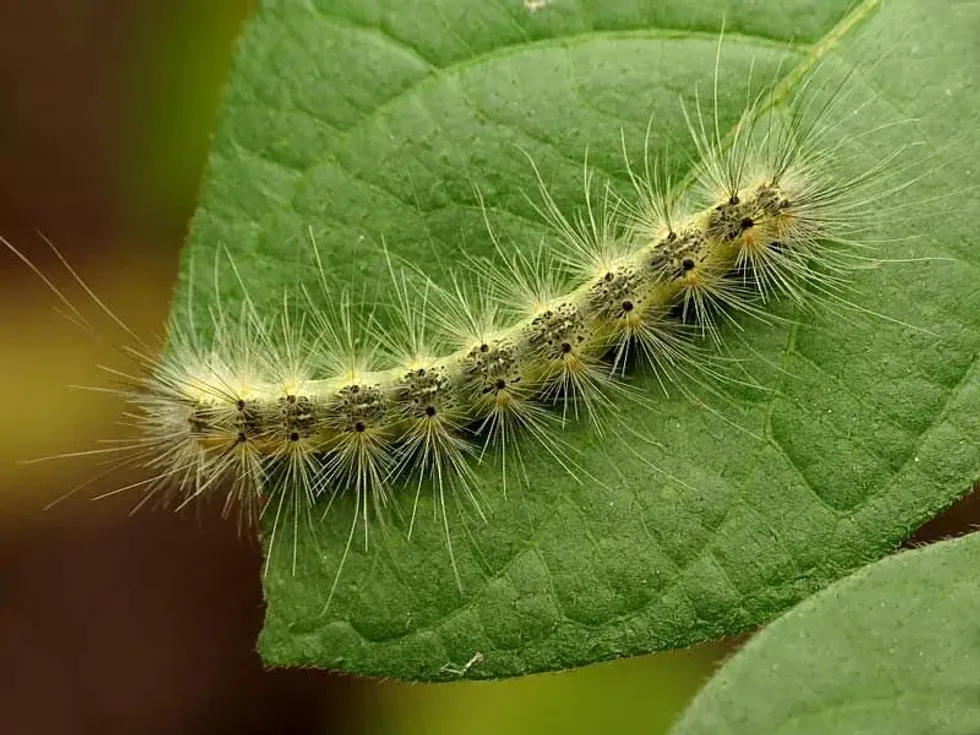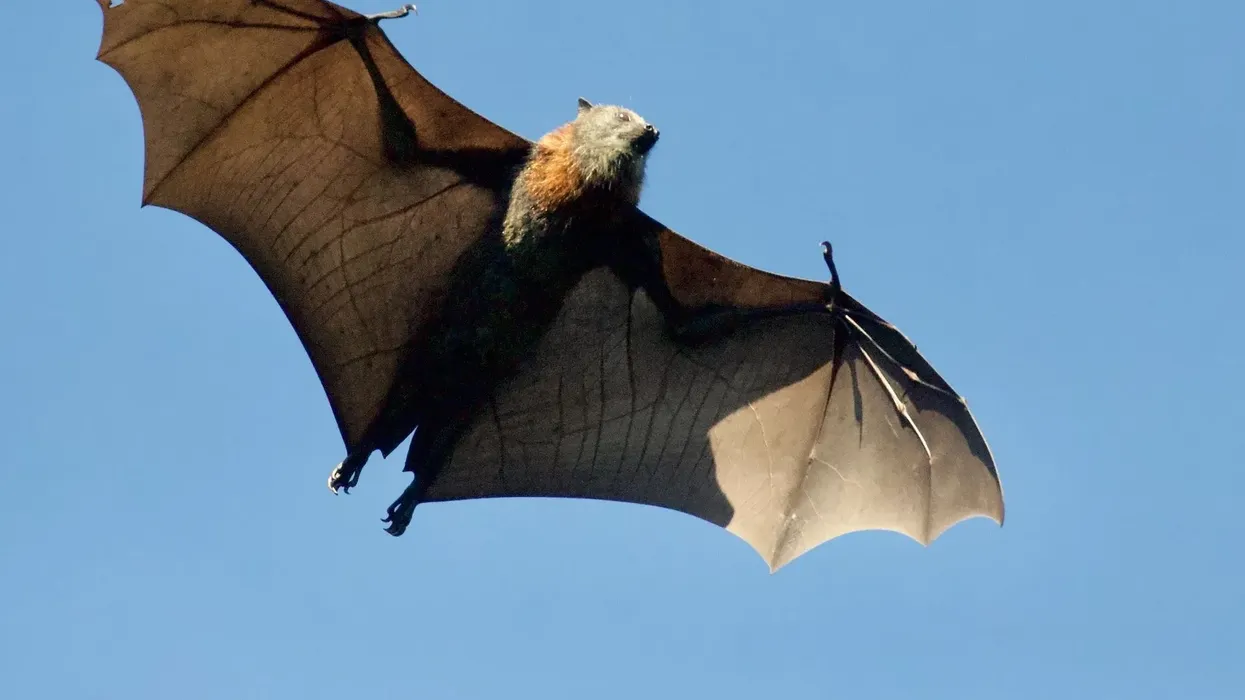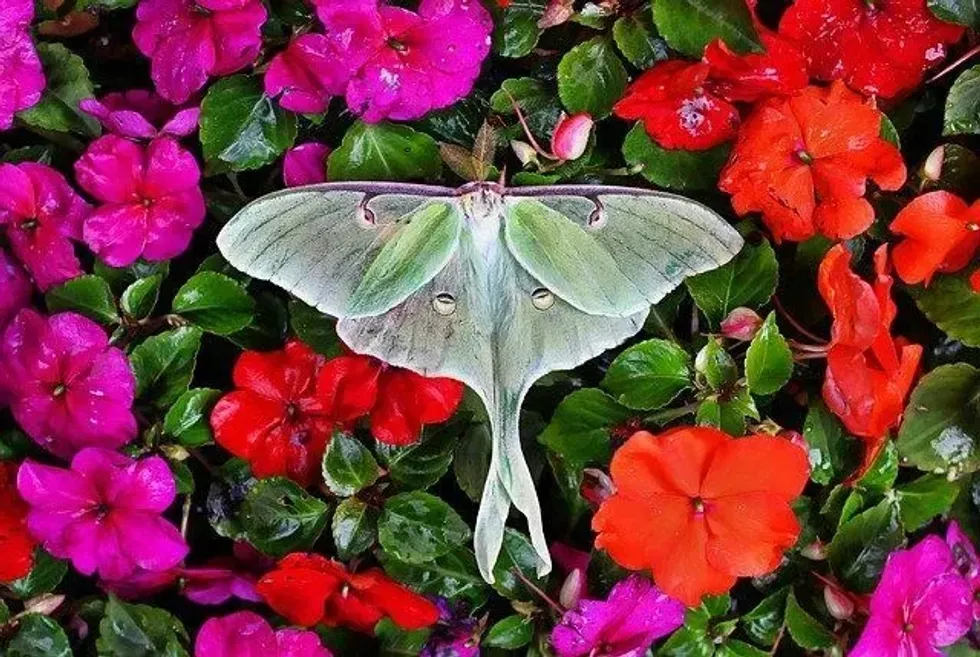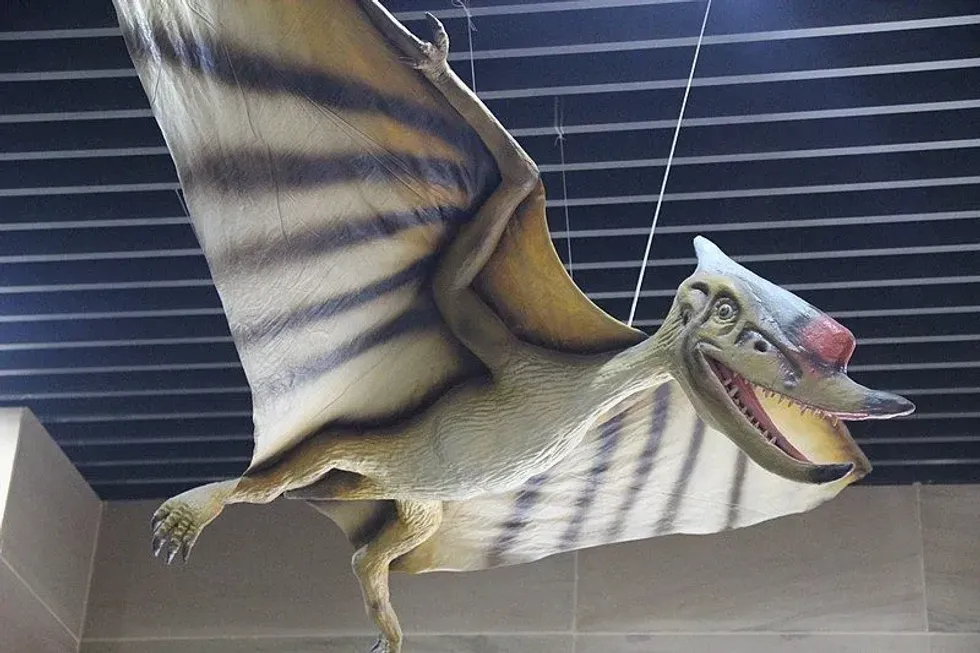The fall webworm moth or fall webworm (Hyphantria cunea) is known for its larvae stage, where it creates a webbed nest on a hardwood tree in late summer or fall. Fall Webworms are considered a pest but they do not cause much harm to healthy trees.
The adult fall webworm (Hyphantria cunea) is known to have a wingspan of 1.4-1.7 in (3.6-4.3 cm) and is white. Some moths have dark spots on their wings too.
The base of the front legs is brightly colored like orange or yellow. The moth is native to North America, but it is found in other parts of the world too.
Fall webworms are mostly found on deciduous trees, where they can eat the leaves, branches, or the entire tree. They are found on plants by considering factors like how exposed to the sun they are, age, environmental stressors, toughness, and nutritional quality.
Fall webworms can be found on ornamental trees and crops too. It has become an invasive pest in Asia and Europe too.
Fall webworm moths (order Lepidoptera) are nocturnal creatures and are attracted to light. The fall webworm tent will enclose the foliage at the end of a branch. The hairy caterpillars can build silk tents that can cover several branches.
Only heavy infestation can defoliate the tree. Otherwise, they do not cause much damage.
Hairy caterpillars vary in colors from yellow to brown to greenish and are covered with long silky gray hair. Here are some interesting facts about the Fall Webworms that pupate in leaf litter for your perusal. Afterward, do check our other articles on huntsman spider facts and praying mantis facts as well.
Fall Webworm Moth Interesting Facts
What type of animal is a Fall Webworm Moth?
The fall webworm moth or fall webworm (Hyphantria cunea) is a type of insect or pest found in North America and spread rapidly and quickly to other parts of the world due to trade and transportation.
What class of animal does a Fall Webworm Moth belong to?
The fall webworm moth or fall webworm (Hyphantria cunea) belongs to the Insecta class of animals. It is a white tent-building moth that is found on host trees of hardwood or deciduous variety. Fall Webworms do not cause much harm but are still considered a pest.
How many Fall Webworm Moths are there in the world?
The exact life cycle and number of Fall Webworm Moths are difficult to find as it is found in many regions of the world. It is mostly attached to a host tree of the hardwood variety or fruit or an ornamental tree at the end of the branch of trees and shrubs.
Each web of these creatures may contain several hundred larvae and leaf fragments.
Where does a Fall Webworm Moth live?
The fall webworm moth originated in North America from Canada to Mexico. The webworm is one of the few insects that has traveled from North America to other parts of the world.
Found in Yugoslavia first around 1949, it spread throughout Europe.
It is now found from France to the Caspian Sea to Central Asian countries like Turkmenistan, where it was found between 1990 -1993, Uzbekistan, especially in the Fergana Valley from 1996 - 1997 to Kyrgyzstan and southeastern Kazakhstan.
In 1945 it was found in Japan, China, southern Mongolia, Korea, and southern Primorsky Krai of Russia, which is closest to the Arctic regions.
What is a Fall Webworm Moth’s habitat?
The fall webworm moth’s caterpillar stage starts in forest trees and shrubs close to human habitation. Fall webworms start building silk tents on the branches of the small trees, especially fruit trees like cherry, peach, and plums, and other trees like apple, crabapples, and Hawthorne.
They may be found on broadleaf trees like birch, ash, maple, willow, poplar, and oak. Eastern tent caterpillars are active in the summer months from late May to June in landscaped gardens, orchards, hardwood forests, and other feeding sites.
Who does Fall Webworm Moth live with?
The fall webworm moth may live in groups, but it will flutter alone. Not much is known about their living conditions. They prefer living near feeding sites where they feed on the leaves of various trees.
How long does a Fall Webworm Moth live?
The adult fall webworm's life cycle may last for a month to three months. Eastern tent caterpillars live for 10 months and adults may live for five days. Females host plants are known to die soon after laying eggs.
How do they reproduce?
The adult female moth webworm will lay her eggs on the underside of leaves in hair-covered clusters. The yellow eggs are laid in masses of several hundred on the undersides of leaves.
Eggs hatch in a week and numerous hairy caterpillars hatch from one egg mass. She will usually lay 400-1000 eggs in a batch. Once the fall webworm moth larvae hatch, it starts spinning the silk tent, and young hairy caterpillars will web on a leaf and feed on it too.
These caterpillars vary in coloration. Fall Webworms could be pale yellow to dark grey with yellow spots and long silky hair.
Host plants have cream-colored stripes on both sides. The caterpillars found in the north and the ones found in the south have different colored heads.
Webworms grow to a length of 35 mm. The webs are mostly concentrated on the tips of the branches. The larvae may feed inside these tents till late instars.
The mature larvae are hairy and sometimes lime green in color with black or dark spots. The larval stage will last for four to six weeks.
The caterpillars are known to wriggle around regularly in synchrony. The pupal stage begins around winter on the bark or leaf litter on the ground near the trees. Caterpillars are dark brown with a length of 10 mm.
The caterpillars weave a thin brown cocoon made of silk. The adults are mostly white, especially in North America. In the south, the larvae have brown or black spots on the forewings.
caterpillars are quite hairy and have bright yellow or orange-colored feet. In the northern region, caterpillars may have only one generation of moths, where the larvae appear in late summer or early fall. In the southern region, they have up to four generations every year.
What is their conservation status?
The conservation status of the fall webworm moth is of Least Concern, as it is found in abundance around the northern hemisphere. However, it is considered a pest in most regions, and efforts are made to curb their population.
Fall Webworm Moth Fun Facts
What do Fall Webworm Moths look like?

The adult fall male webworm is white, sometimes some moths have some dark spots on their wings too. The base of the front legs is brightly colored in orange or yellow.
How cute are they?
Adult moths are unique creatures colorwise, looks-wise, and even in their tent-building capabilities.
How do they communicate?
Not much is known and recorded about their vocal or nonvocal communication.
How big is a Fall Webworm Moth?
The adult fall webworm moth is about an inch in length with a wingspan of 1.4-1.7 in (3.6-4.3 cm).
How fast can a Fall Webworm Moth move?
The larvae may not start moving until springtime. The exact speed of this species is unknown.
How much does a Fall Webworm Moth weigh?
There is no data on the exact weight of the fall webworm moth.
What are the male and female names of the species?
The male and female fall webworms do not have any specific names. They are known as male fall webworm moth and female fall webworm moth respectively.
What would you call a baby Fall Webworm Moth?
The baby fall webworm has stages from eggs to larvae or caterpillar to pupa to adulthood. So, the name changes as per the life cycle.
What do they eat?
The fall webworm moth tents feed on any type of deciduous tree, whether it is their leaves or branches, and can defoliate an entire tree. The species can be found on black walnut, pecan trees, hickory trees, American elm, different varieties of fruit trees, or broad leaves trees like maple, sweet gums, persimmons, alder, willow, and cottonwood.
They can eat host trees and the fall webworm moth diet consists of mulberry, madrone, American sycamore, ailanthus, or the Asian birch tree.
The natural enemy of the fall webworm moth is the tiger moth.
Are they dangerous?
No, this species is not dangerous or harmful to humans. They are considered an invasive species that may defoliate a tree, but they do not spread much.
Would they make a good pet?
Some people do like having small insects like moths or butterflies as pets. If you enjoy this, you can look for one in a nearby forest or garden. The fall webworm moth on orchid is also delightful while the Fall Webworm moth caterpillar is also the same.
Did you know...
The number of generations depends on the latitude.
The Fall Webworms are different from the eastern tent caterpillars.
Fall Webworm moth symbolism differs.
Fall Webworms feed on over 600 species of trees and shrubs.
How to raise Fall Webworm Moth caterpillars?
You can let this species spin its silk tent on a tree branch and observe them grow and feed on the leaves in that tent cover.
How long does it take to hatch Fall Webworm Moth?
The larvae can hatch in a week for Fall Webworm moths. Fall Webworm moth damage is noticed while hatching.
Here at Kidadl, we have carefully created lots of interesting family-friendly animal facts for everyone to discover! Learn more about some other arthropods including horseshoe crab facts, or apple snail facts.
You can even occupy yourself at home by coloring in one of our free printable fall webworm moth coloring pages.

